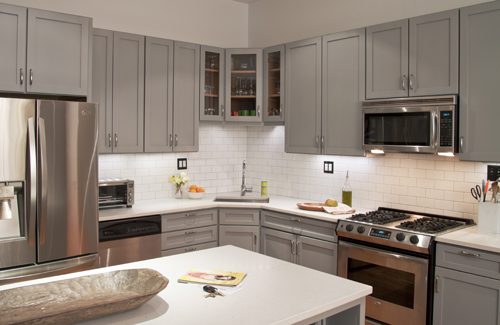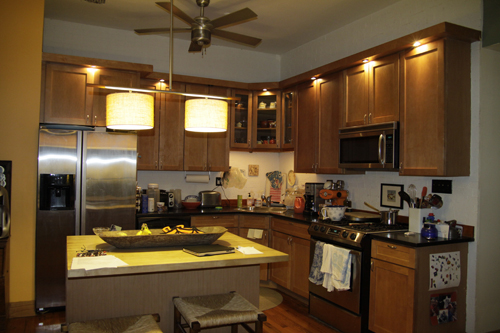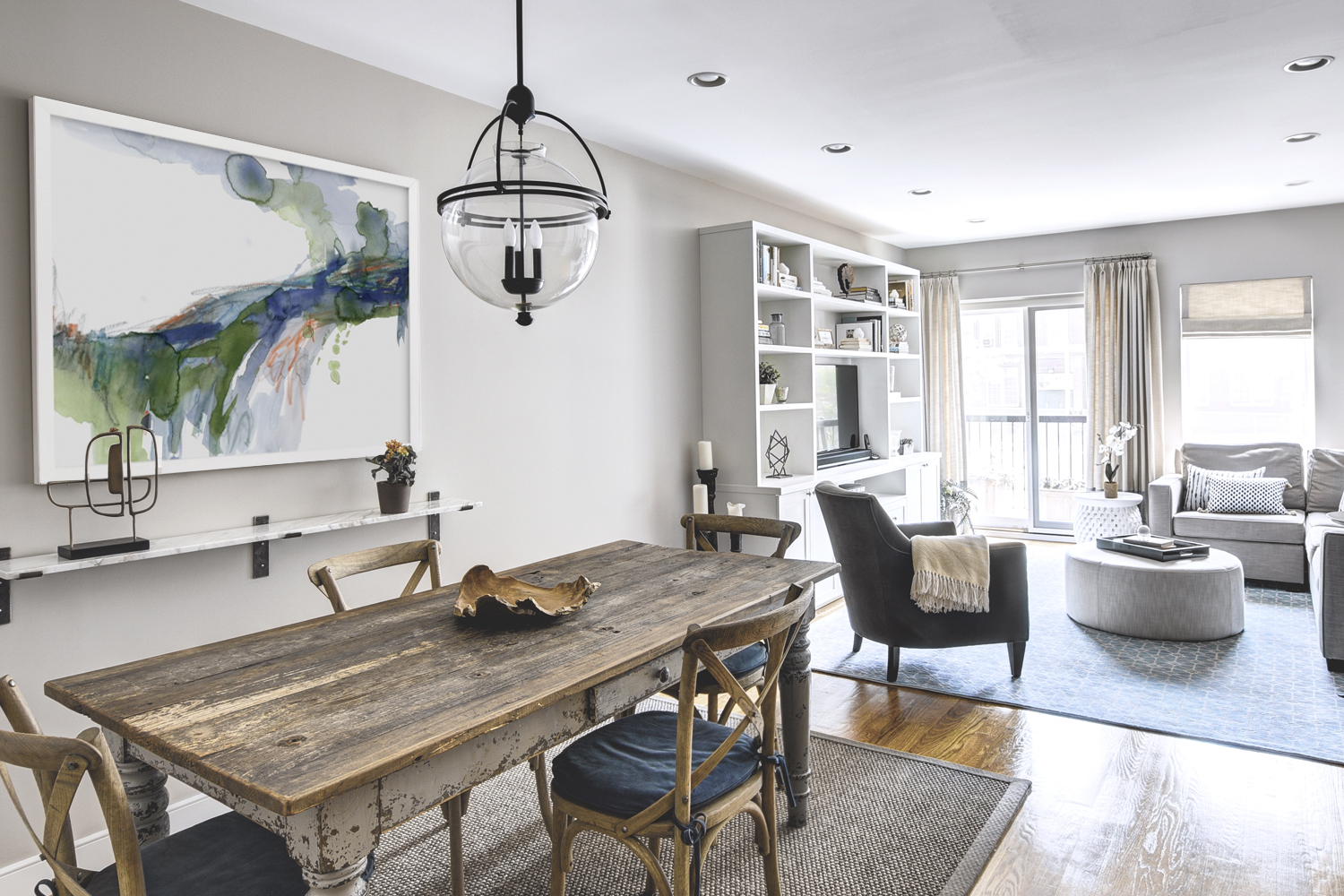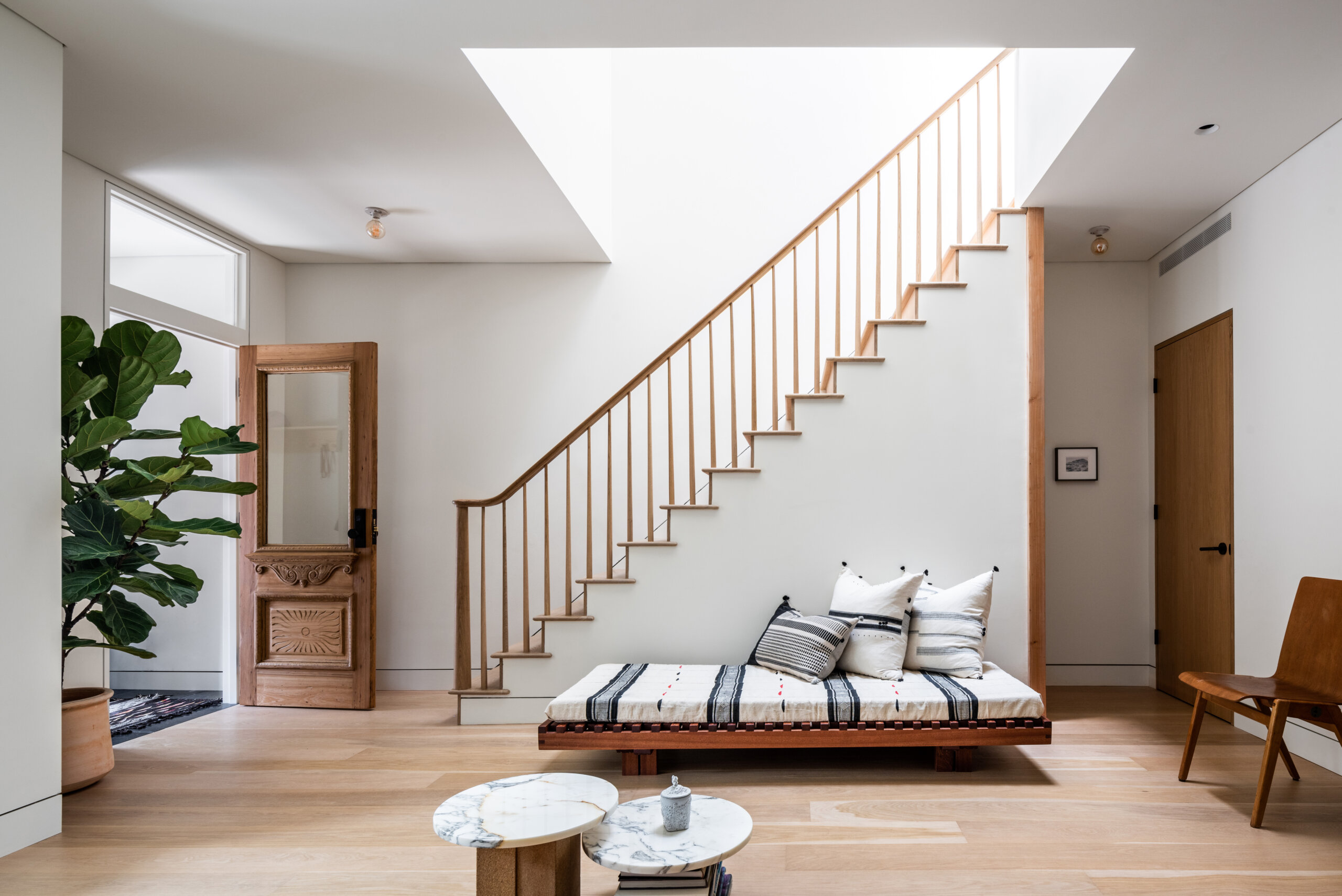An Eco-Friendly Kitchen Upgrade
Although functional, this kitchen in a converted industrial building in Fort Greene needed a makeover to turn it into a family-friendly space. The owner is deeply involved in environmental issues, and she wanted the renovation to have as minimal an impact on the environment as possible. Interior designer Jennifer Levy of Brooklyn-based CAVdesign came up with a…

Although functional, this kitchen in a converted industrial building in Fort Greene needed a makeover to turn it into a family-friendly space. The owner is deeply involved in environmental issues, and she wanted the renovation to have as minimal an impact on the environment as possible. Interior designer Jennifer Levy of Brooklyn-based CAVdesign came up with a plan for a cozy gathering spot, more storage, and better lighting that would make use of the existing cabinets and appliances rather than throwing them away.
Levy built a new island and two large pantries flanking a built-in bench for the eating area. To unify the old and new cabinetry, she painted them using a low VOC paint. The shaker doors on the new cabinetry were scaled to match the existing ones, and a subway tile backsplash was added. The kitchen had no natural light, so Levy amped it up with more recessed lighting and under-cabinet lighting using LEDs. “I’ve been using WAC LED under cabinet lights for a while now and they look great because they have a lens that diffuses the LEDs, which tend to look spotty,” said Levy. A soffit over the new bench cozied up the space and allowed for recessed LED lighting to highlight the wallpaper.
Here is the kitchen before, above. The lighting lit up the cabinets, but not the work spaces.
After the renovation, the kitchen is brighter and much more functional.
Since there was a table in the room already, they decided not to put an overhang on the island and instead use it for cookbooks and kid-accessible storage.
Cabinets doors and drawer fronts were removed and painted off site. Only the door frames were painted in place.
Before: The eating area had a hodgepodge of not-so-great storage solutions.
The soffit being built.
The proposal for the eating area.
The new bench, pantries, space for an even larger table and cheerful wallpaper created coziness and functionality for this area, said Levy.
The two cabinets were designed to hold as much as an entire pantry room.
Although the renovation kept the existing cabinets and appliances, the kitchen was dramatically transformed. The lighting and the repainting probably had the most impact. Levy has four tips for eco-friendly upgrades:
- Use existing cabinets. Painting cabinets, or even replacing the doors and using the same boxes will save them from ending up in a landfill. Big-box stores offer cabinet refacing services, and a local carpenter who does spray finishes may be cheaper and can build additional cabinetry to match your existing.
- Reality-check your counter. Make sure that any materials you use match your lifestyle. Many eco-friendly countertops require regular sealing and may be vulnerable to acids (lemon juice, vinegar) and staining. Be realistic about maintenance and keep in mind that there is nothing eco-friendly about replacing a counter after eight years if it hasn’t aged well.
- Embrace sustainable lighting. Recessed LED lights are getting better all the time. The bulbs last an extremely long time and have a more sparkly quality of light than CFL bulbs (with no warm-up time). The same goes for under-cabinet lights, she said.
- Keep or recycle appliances. Sometimes keeping what you have uses the least amount of overall resources. If you choose to replace appliances that work, find them a good home through freecycle, Build it Green! or another resource.
Levy’s kindle book, “Kitchen Design and Renovation: a Step-by-Step Guide to Planning and Managing Your Kitchen Makeover” will be offered for free for two days only, today and tomorrow. Get it here.




















The under counter LED lighting really improved the feel of the kitchen.
I’d love to know the paint color…gorgeous!
I’d love to know the paint color…
I think you just need to sand, prime and paint for the cabinets, though it looks like these were sprayed.
The lighting makes a huge difference. Well done!
actually caring about the environment and upgrading a fully-functional kitchen are mutually exclusive.
In addition to being eco-friendly, this seems like a very budget-friendly renovation, and the outcome looks great!
right, just like a second bathroom also does not make your life better.